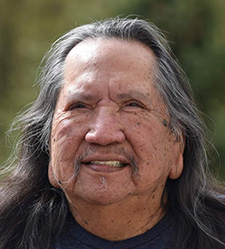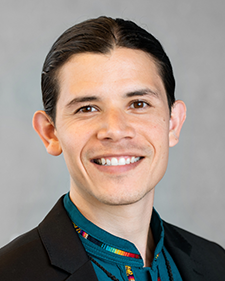WASHINGTON — Time spent at an Indian boarding school in South Dakota led to decades of struggles for Shakopee resident George McCauley, one of thousands of Native American youth who attended the schools.

But McCauley says the boarding school failed to provide what he needed at a crucial time in his life. He recalled being summoned to the principal’s office one day, where he was given a slip telling him to go to his dorm room. The dorm supervisor then came by and said, “I have some bad news to tell you: Your mom died last night.”
“There was no kind of nurturing, there was no way for me to grieve,” McCauley said. “It took me 50 years to realize I had some serious abandonment issues.”
McCauley said he was spared the brutal physical, mental and even sexual abuse that Indian children were subjected to since the institutions were established in the mid-19th century — a brother-in-law from South Dakota experienced physical abuse at a school. But he says he still has trauma that is intergenerational, that has affected his relationship with his daughters.
McCauley, 71, belongs to the last generation of Indian boarding school students. While experiences vary, the survivors all share a painful legacy. And there’s an urgency to capture their stories before it’s too late.

The coalition has been trying to collect information about the boarding schools from the federal government and the religious organizations that also ran boarding schools.

Torres said federal government archives have been accessible and contain reams of information, but there’s still a lot of research that must be done, especially regarding the church-run schools.
“Some Christian churches have met us with open arms,” Torres said. But others have not. Still, Torres doesn’t “want to name names.”
Yet the frustration is palpable.
“We still don’t know where about 60% of the boarding schools were,” he said.
Without that knowledge, the history of those schools and their impact on Native Americans is incomplete, said Torres, whose organization is digitizing thousands of pages of records. “And we know that this (missing) material needs to be out there for the public,” he said.
The coalition estimates that at least 24 boarding schools existed in Minnesota. It is still seeking to verify the location of others in the state.
A member of the Nahua tribe, Torres said the National Native American Boarding School Healing Coalition moved from Colorado to Minneapolis “because we find that Minnesota and the Twin Cities are unique, with many beautiful expressions of the urban Indian experience.”
“We see (the state) very much as a central place,” Torres said, in part because it is home to many tribes and to many Native Americans from other states in the Midwest.
McCauley said he came to Minnesota in 1971 because he impulsively changed a train ticket that was to take him back to his reservation in Nebraska.

“They weren’t there to educate you,” he said of his boarding school’s teachers and administrators. “I graduated high school in 1971 with a 10th grade education.”
McCauley overcame his addiction and is proud he’s been sober for 47 years. But he is still grappling with the past.
“The trauma that we experienced is still felt today,” he said.
To help in its efforts to document and create a digital archive of a little-known chapter in American history, the coalition and other Indian advocates have looked toward Canada and to what the neighbor to the north has done to reconcile itself with its past.
In 2008, Canada approved legislation that created the nation’s Truth and Reconciliation Commission. It gathered about 7,000 statements from residential school survivors and in 2015 released a scathing report that concluded the school system amounted to cultural genocide.
Then, in 2021, the discovery of 200 graves — believed to belong to mostly children — on the site of a former boarding school at Kamloops, British Columbia, touched off an effort that resulted in the identification of thousands of unmarked graves on the grounds of former residential schools.
Efforts to heal the trauma
The U.S. Senate Indian Affairs Committee, on a bipartisan basis, approved a bill in May modeled on the Canadian legislation. It would help unearth the documents needed to fully tell the story of the boarding schools and “develop recommendations for the federal government to acknowledge and heal the historical and intergenerational trauma caused by the Indian Boarding School Policies.”
Introduced by Sen. Elizabeth Warren, D-Massachusetts, the bill is co-sponsored by about two dozen Democrats, including Sens. Amy Klobuchar and Tina Smith, and several Republicans.
The legislation would establish a 10-member bipartisan commission whose members would be appointed by the White House and leaders of the U.S. House and U.S. Senate.

The commission would develop recommendations for the federal government to acknowledge and heal what it says is the “ongoing historical and intergenerational trauma passed down in Native families and communities and provide a forum for survivors to speak about these human rights violations.”
The bill would also establish a nationwide hotline for survivors, family members, or other community members affected by the Indian boarding school policies and “prevent the continued removal of American Indian, Alaska Native, and Native Hawaiian children from their families and communities under modern-day assimilation practices carried out by state social service departments, foster care agencies, and adoption services.”
Minnesota Lt. Gov. Peggy Flanagan, a member of the White Earth Band of Ojibwe who was raised by a single mother, said she hopes Congress will take action.
“The trauma experienced at American Indian boarding schools is one generation removed from my family,” Flanagan said. “With a legacy that affects so many of us, we have a responsibility here in Minnesota – and across the country – to understand the impact the boarding schools had and continue to have on our families and communities.”

Most of those day schools are very different today, teaching Indian languages and culture as part of a curriculum aimed at helping Native children succeed.
Approval of the Indian boarding school bill in the GOP-led U.S. House may be another matter. The House Committee on Natural Resources will have jurisdiction over the issue.
Native American advocates like Sheldon say the legislation is needed to build on the efforts of Interior Department Secretary Deb Haaland, who in 2021 implemented the Federal Boarding School Initiative.
The initiative’s report released last year said the schools used “militarized” tactics to assimilate Native American children as young as 4 years old in facilities that fostered “rampant physical, sexual, and emotional abuse; disease; malnourishment; overcrowding; and lack of health care.”
The report also said the federal government used money from Indian Trust Funds to pay schools — even those run by religious organizations — to take children away without parental consent and assimilate them into white communities as part of a longstanding U.S. policy to destroy the tribes and seize their territories.
The report said the boarding school system focused on manual labor and vocational skills that left their graduates with employment options often irrelevant to the industrial U.S. economy. Rules were often enforced through punishment, including corporal punishment such as solitary confinement; flogging; withholding food; whipping; slapping; and cuffing. It said it has identified 53 burial grounds on the sites of former boarding schools in the United States.
Haaland, a member of the Laguna Pueblo tribe, is traveling across the country this year to allow survivors of the federal Indian boarding school system the opportunity to share their stories, help them connect with support that would ease their trauma and collect a permanent oral history from stories like McCauley’s.
As part of the tour, Haaland visited Onamia in early June at the invitation of the Mille Lacs Band of Ojibwe.


0 Commentaires